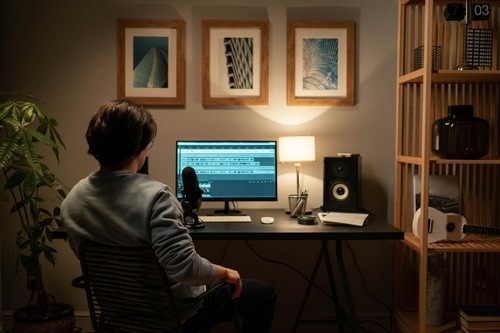Sound has the power to touch human souls. A tiny piece of music has the potential to unlock a memory, alter an atmosphere, or even pre-establish an entire atmosphere. And for most creatives, musicians, and producers, it is all too easy a challenge—especially when one is low on resources or expertise. This is where AI for music is not just a buzzword anymore. It’s a program that’s revolutionizing how people make, mess around with, and distribute sound.
Those days are over when you needed to be adept in mastering complex production software or spend hours searching for a royalty-free track that felt just “alright.” With AI music tools, you simply tell it what you need—emotionally, stylistically, or structurally—and build something that works, quickly. It’s like having a never-resting collaborator that doesn’t judge you and always provides.
That doesn’t take the soul out of music. It pulls more of your voice out by reducing the tech barrier that blocks you most often. It leaves you with freedom to focus on feel, rather than function. You don’t need to know how to do chord progressions or digital audio workstations in order to create something emotive—you just need an idea.
They serve every audience differently. For solo artists, AI can be an easel, a tool for coming up with song ideas prior to going into a recording studio. For videographers or advertisers, it offers custom soundtracks based on the mood of the content. For podcasters, it’s an effective way to add mood and energy. There are as many uses as there are creatives.
One of the most convincing aspects is how AI reacts to creative input. Want a moody ambient piece with subtle energy shifts? Tell it that. Want a looping beat with lo-fi textures? Give the tool a prompt and see what it comes up with. And if the first version isn’t quite right, tweaking is part of the process—it gets better the more you mess around.
But don’t confuse AI with a substitute. It’s more of an idea machine, a sounding board. Human touch is still important, particularly when tweaking the output or overdubbing vocals and live instruments. AI simply does the heavy work for you, providing you with a neat draft that you can work upon.
Let’s also talk about the time factor. Writing music from scratch used to take hours—sometimes days. With artificial intelligence, that time is significantly cut down. You can have multiple versions of a song ready within minutes, enabling you to learn faster and make better artistic choices.
There’s a cost aspect to this, too. Not everyone has the resources to compensate musicians, producers, or studio time. AI software reduces the cost barrier, enabling people to turn their ideas into reality without sacrificing quality. It’s democratizing music production in a way it never has been before.
Another good aspect? Discovery. AI will sometimes introduce you to sounds or structures you would never have thought of on your own. It nudges you out of your comfort zone and into more experimental territory. That’s not only effective—it’s motivating.
Although there is still some opposition in mainstream music circles, things are changing. Artists are now speaking more openly about incorporating AI into their workflow. It’s not a cheat, but part of the workflow. And as the technology gets better, their musical chops become harder to dispute.
Even students and teachers are jumping in. Teaching music theory or production used to be a slow climb. Today, AI technology allows students to implement right away what they’re learning, hear results in real time, and hone their knowledge.
It’s also interesting to consider how they shift. With each generation, they’re better sensitive to nuance—volume, timing, harmony, and emotion. That reduces the distance between machine-produced and human-written music a bit with each track.
In short, AI isn’t making music cold or robotic. It’s opening up the playing field. It’s giving people more chances to express themselves, more freedom to experiment, and more speed to bring their sound ideas to life.
If you’ve got something to say in sound, AI might just be the fastest, easiest way to say it beautifully.
